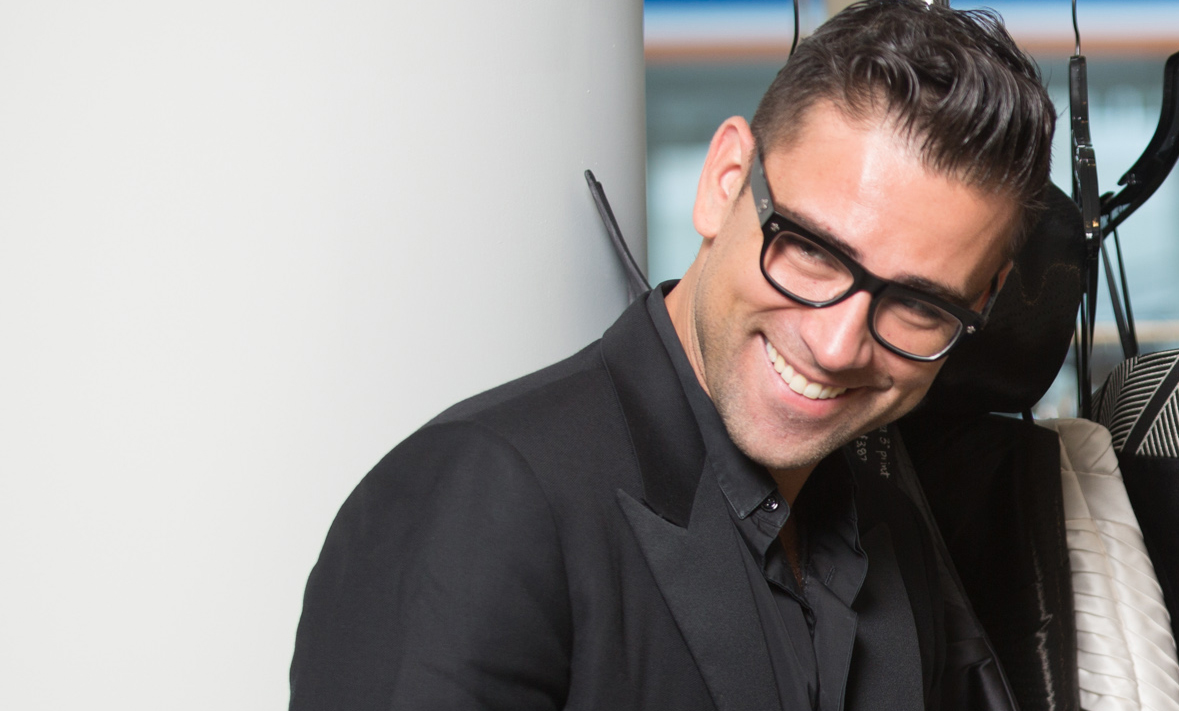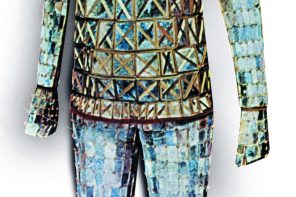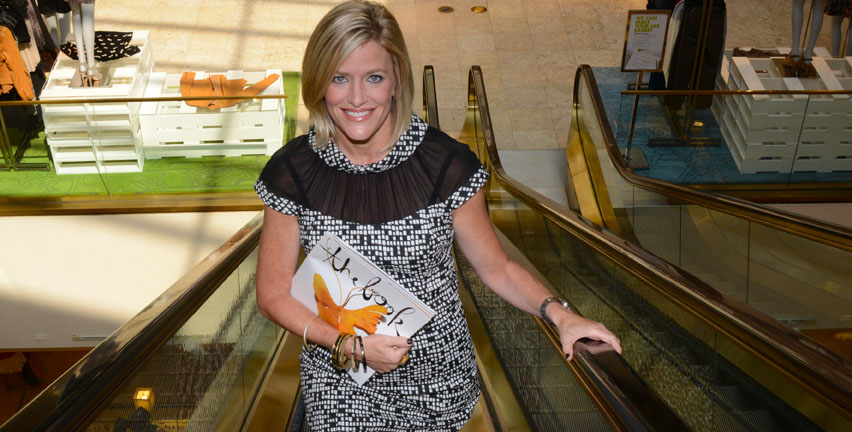Rubin Singer knows the power of a suit. He knows it in his bones.
“What happened was that (my grandfather) escaped from the Nazis in Poland and walked to the Soviet Union where he was captured by the Communists and sent to work in a coal mine,” he says.
But I’m not a miner, Singer’s grandfather told an officer. I make clothes.
Well, then, the officer said, make me a suit and we’ll see whether you live or die.
It must’ve been some suit.
Not only did the grandfather – for whom Singer is named – survive, but he thrived, becoming the first official couturier to the Communist Party elite and the premier himself – Josef Stalin.
Singer’s father, Alik, created costumes for the Bolshoi Ballet and the Stanislavski Theater. Rubin Singer, then, is a third-generation designer.
What did he learn from such a fashion-able family?
He fixes you with those limpid gray-green eyes, framed by square black glasses and chiseled bone structure.
“Form,” he says.
The Austrian-born Singer grew up in Paris and New York in a cultured household, with afternoons and evenings spent listening to Wagnerian operas or watching the likes of Mikhail Baryshnikov in a theatrical production of Franz Kafka’s “Metamorphosis.” Singer studied fine arts at Purchase College and Central Saint Martins in London before chucking school to work as an associate designer at Oscar de la Renta. (He was also head designer at three Bill Blass licensees.) And indeed, though Singer’s style is entirely his own, he nods as you note that there is something of de la Renta’s classic voluptuousness in his ball gowns. It’s not surprising, then, that Singer’s work should find its way to Mary Jane Denzer in White Plains, where Oscar is a staple. And it’s fitting that a trunk show of Singer’s Autumn/Winter 2014 Collection should inaugurate the official opening of the store, which is next to The Ritz-Carlton, Westchester. Denzer and Singer are a mutual admiration society.
“I love Mary Jane,” he says.
Denzer, who’s been carrying his clothes for several years, speaks of “his fabric and his draping. He has a huge design background. He really understands (design) which not every designer does.”
A breathtaking example of this is the black oleander-print, strapless, draped ball-gown that draws admiring gazes and exclamations from the audience gathered for Denzer’s ribbon-cutting, including White Plains Mayor Thomas M. Roach; Janis Morris, director of constituent affairs for New York State Sen. Andrea Stewart-Cousins; and designer Neil Bieff. The sweetheart neckline, fitted bodice and bell-shaped skirt that stops at the ankle manage to echo the 18th century and the 1950s all at once, while the cascades of gathered fabric illustrate Singer’s gift for drapery and theatrical flair. An edgy touch: On the front of the gown there appears to be a smudge that’s really a wisp of the charcoal-colored print.
If the gown, part of Singer’s Resort 2015 Collection, hints at de la Renta, the fall-winter collection pays tribute to Santiago Calatrava – who designed the World Trade Center’s soaring Transportation Hub – and the architect’s dynamic ability to marry angular and curved forms.
Singer explains the inspiration: His previous collection found him ensconced in ancient, gilded Egypt, and he was casting about for something new. On a trip to Buenos Aires, he saw Calatrava’s Puente de la Mujer, or Women’s Bridge, based on the curve of a woman’s body as she’s dipped in the tango.
“And I thought, ‘Wow, what an amazing talent that can take the human form and turn it into an abstraction.’”
Singer’s metallic evening dresses, python jackets, leather moto blazers, suede cocktail dresses and peekaboo blouses that offer the illusion of nudity capture the tension between the classic and the modern, the curved and the angular in Calatrava’s work and the female body, but they do so with a twist. Asymmetry rules in Singer’s designs: Straps are mismatched, Sleeves billow while hemlines and collars rise. Patterns appear to be inspired by shards of stained glass, as exemplified by the evening gown on the cover of the Look Book that is available at Mary Jane Denzer.
“To me what’s important to asymmetry is to find a balance.”
Singer achieves that in his “Calatrava 3” cocktail dress, in which the neckline, waist and knee-length are underscored by contrapuntal diagonals and a jagged pattern that recalls the Chrysler Building’s diadem. It’s similar in spirit to Singer’s Zigzag dress, which Carrie Underwood wore recently.
“Clothes can empower people,” he says. “My clothes are about not only making people feel beautiful but strong. This is not only my aesthetic, but my spiritual belief.”
Lots of strong women wear Singer’s clothes, including Glenn Close, Alicia Keys, Heidi Klum, Lucy Liu, Queen Latifah, Shakira and Kerry Washington. But Singer is perhaps best known for the leather-lace body suit he created for Beyoncé’s 2013 Super Bowl halftime show that spoke to her Sasha Fierce incarnation. (He also did the designs for her “Mrs. Carter Show” world tour.) The Super Bowl outfit was featured in a Rock & Roll Hall of Fame exhibit that opened July 22, his birthday. It was a high point in a career landscape that has had its peaks and valleys.
“I’ve had a lot of trials and tribulations since going out on my own eight years ago. I survived the recession then got involved with partners who screwed me out of money.” (In April, a group of investors sued Singer, saying he spent $560,000 in seed money on his peripatetic personal life.)
That life goes on. Singer shares it in Manhattan with his partner, the travel writer Carlos Melia, and their brown Miniature Schnauzer, Bruna. The pair met in Thailand, Singer’s favorite place, taking the Orient Express from Bangkok to Singapore. They return to Thailand every year.
In Manhattan, Singer has a studio/showroom on 39th Street between Seventh and Eighth avenues, where he employees 30 people. His management style is, “I run the show.”
He says this not with arrogance but with the matter-of-factness of a businessman whose independence has been hard-fought and who believes he owes a debt to the past.
That suit his grandfather made in the World War II era didn’t just save his life, it made his grandson’s possible. “It saved my family DNA,” Singer says. And it created a dream he won’t deny.
“You have to want it and believe you’ll attain what is yours in this world.”





